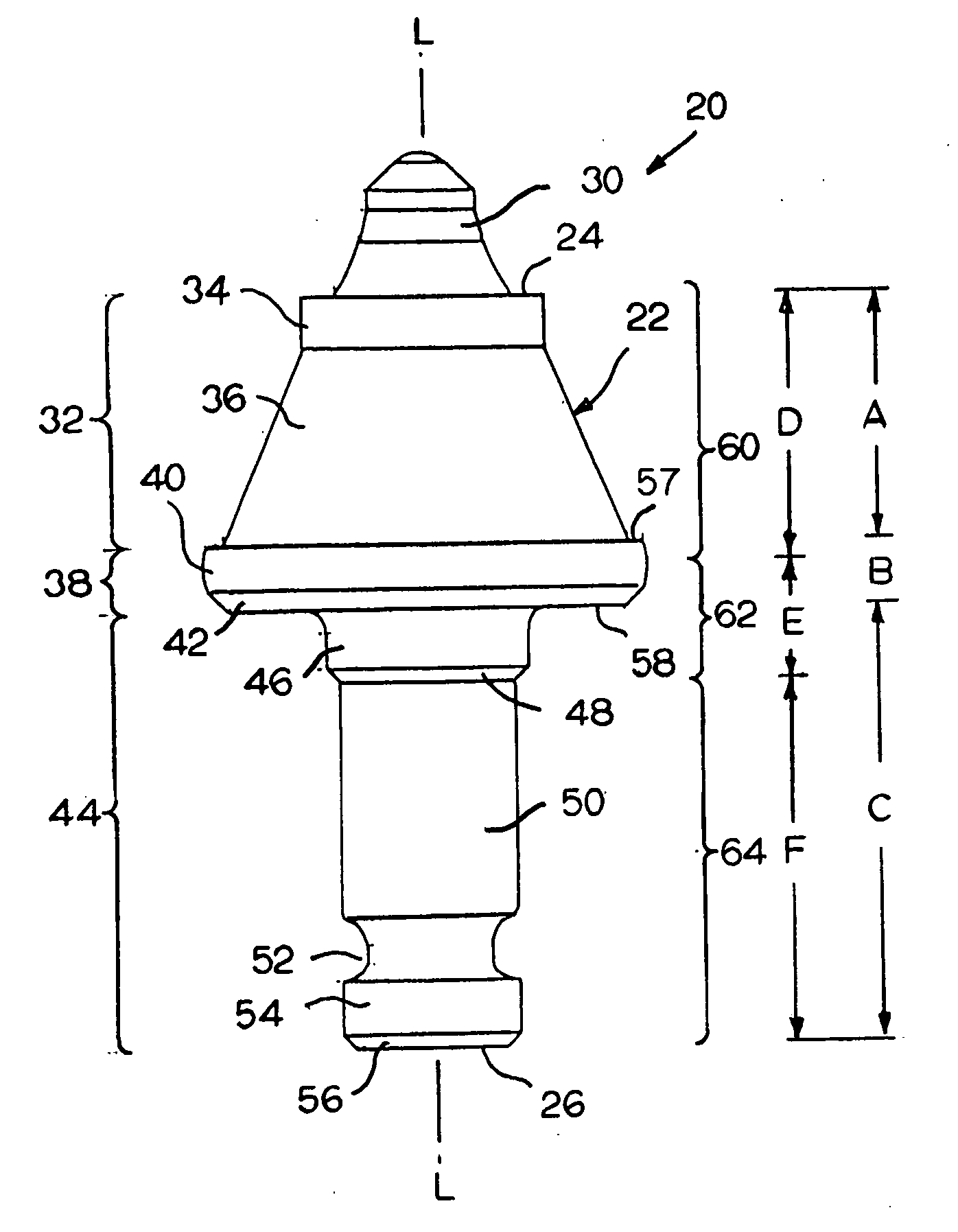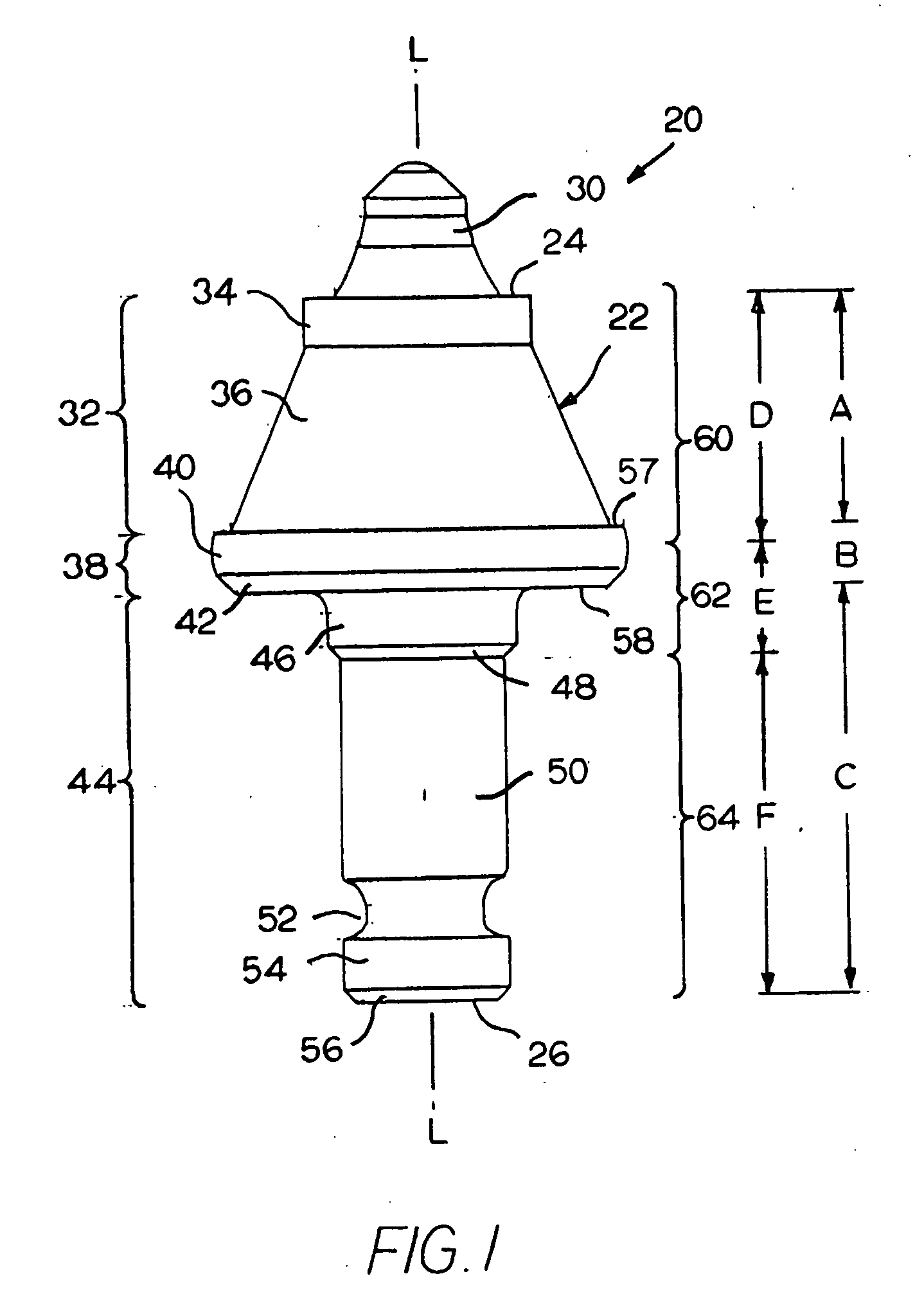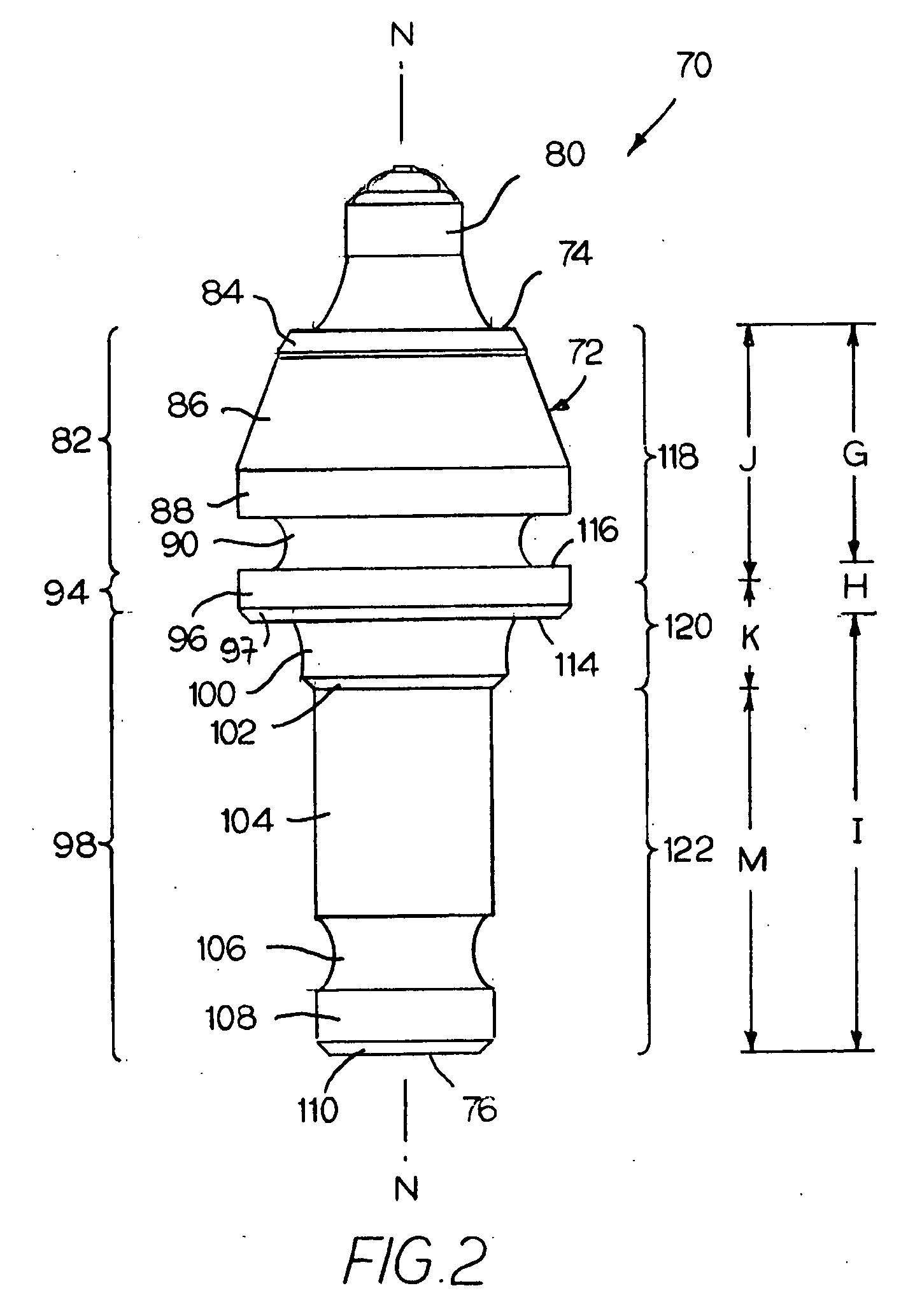Rotatable cutting tool and cutting tool body
a cutting tool and rotatable technology, applied in the direction of cutting machines, slitting machines, earthwork drilling and mining, etc., can solve the problems of premature failure of the cutting tool body, severe wear and severe stress and the termination of the useful life of the rotatable cutting tool
- Summary
- Abstract
- Description
- Claims
- Application Information
AI Technical Summary
Benefits of technology
Problems solved by technology
Method used
Image
Examples
Embodiment Construction
[0018]Referring to the drawings, FIG. 1 illustrates one specific embodiment of a rotatable cutting tool generally designated as 20. Rotatable cutting tool 20 comprises an elongate cutting tool body generally designated as 22. The cutting tool body 22 is typically made from steel such as those grades disclosed in U.S. Pat. No. 4,886,710 to Greenfield, which is hereby incorporated by reference herein. Grade 15B37H Modified is the preferred grade of steel for the cutting tool body 22. Grade 15B37H Modified has the following nominal composition (in weight percent): 0.33-0.38% carbon, 1.10-1.35% manganese, 0.0005% minimum boron, 0.15-0.30% silicon, 0.045% maximum sulfur, 0.035% maximum phosphorus and the balance iron. Grade 15B37H Modified has a minimum hardenability equal to about 52 HRc.
[0019]The cutting tool body 22 has an axial forward end 24 and an axial rearward end 26. A hard insert 30 is affixed (such as by brazing or the like) in a socket (not illustrated) in the axial forward e...
PUM
 Login to View More
Login to View More Abstract
Description
Claims
Application Information
 Login to View More
Login to View More - R&D
- Intellectual Property
- Life Sciences
- Materials
- Tech Scout
- Unparalleled Data Quality
- Higher Quality Content
- 60% Fewer Hallucinations
Browse by: Latest US Patents, China's latest patents, Technical Efficacy Thesaurus, Application Domain, Technology Topic, Popular Technical Reports.
© 2025 PatSnap. All rights reserved.Legal|Privacy policy|Modern Slavery Act Transparency Statement|Sitemap|About US| Contact US: help@patsnap.com



